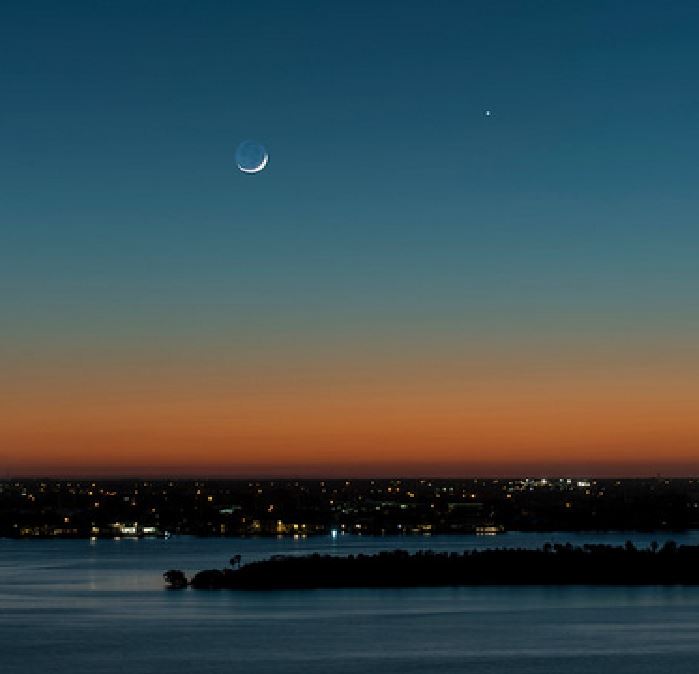
A very bright “star” in the Western sky just after Sunset, before lots of other stars are visible, is almost certainly the planet Venus - this is why Venus is often called “The Evening Star.”

Venus and Mercury are the inferior planets - this comes from a Latin word and just means they are closer to the Sun than the Earth, not that they are less important. Mars, Jupiter, Saturn, Uranus and Neptune are the superior planets, they are further from the Sun than the Earth. Mars Jupiter and Saturn are very bright objects in the Night Sky, you can only just see Uranus without a telescope, you can never see Neptune without one.
When Venus is not visible in the evening just after Sunset, in the Western sky, it may be visible in the morning just before Sunrise, in the Eastern sky, so it is also called “The Morning Star,” it is just that today most people, except sailors, who are out of doors before Sunrise think they have better things to do than look at the sky. Sam thinks this is a pity.
Venus and Mercury are not visible in the Night Sky when it is fully dark because by the time the sky is dark enough to see all the stars they will have set.
The Earth is about 150 million kilometres from the Sun, and Venus is about 108 million kilometres from the Sun, so at its nearest to the Earth it is about 42 million kilometres away (about 2 light minutes). It is therefore our nearest neighbour in space (after the Moon of course).
Venus is nearer the Sun than the Earth so it goes round the Sun more quickly: it goes round the Sun in about 225 days, compared with about 365 days for the Earth, so in the time it takes the Earth to move 15 degrees (about two weeks) Venus will have moved about 24 degrees.
In this animation the Sun is in yellow, the Earth in blue and Venus in black and white, to show which side is facing the Sun.
Like the Moon we can only see the part of Venus which is facing both the Sun and the Earth. Through a telescope we can see that Venus has phases, like the Moon. It starts as full (although of course it would be very dangerous indeed to point a telescope at it until after Sunset!), then waning gibbous, then last quarter then waning crescent. As it moves round the Sun less of its surface faces both the Earth and the Sun so it is reflecting less light towards the Earth, but it is also getting nearer the Earth, so it reaches its maximum brightness (magnitude -4.4) just after last quarter. Sam gets out his telescope to show his friends.
This animation stops just before Venus is at its closest to the Earth; if we were to continue it it would show Venus become the Morning Star, visible in the Eastern sky just before Sunrise. It overtakes the Earth about every 584 days.
The angle between Venus and the Sun determines how long it is in the sky after Sunset. If the angle is small we shall not see it because the sky will still be too bright. The animation starts with this angle zero so we shall not see it. After a few days it is visible as an evening star for about nine months, then it is invisible for about eight days while it is overtaking the Sun, then it is a morning star for about nine months then it is invisible again for about fifty four days.
Mercury behaves in a similar way to Venus, except that it is only about 58 million kilometres from the Sun and goes round the Sun in about 88 days - this means that it moves faster than Venus and so we see it in the sky for less long after Sunset (or before Sunrise). Some evenings we may see Venus, some evenings we may see Mercury, some evenings we may see both, and some evenings we may see neither. Mercury is much less bright than Venus, not only because it is smaller and further away from the Earth, but also because it has almost no atmosphere and is made of dark-coloured rock, so it reflects much less of the Sun's light. Some books say it is difficult to see, but Sam says this is not true, you just have to know what you are lookng at, it is not as obvious as Venus.

© Barry September 2023